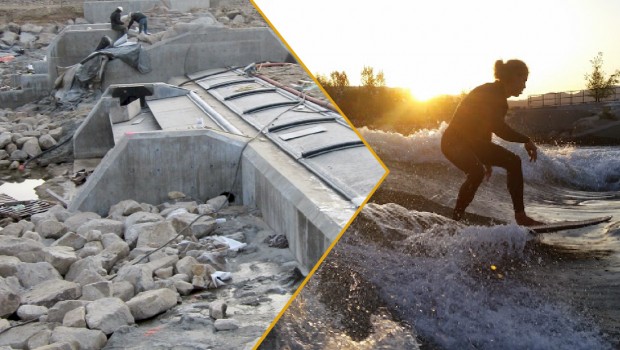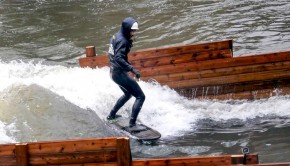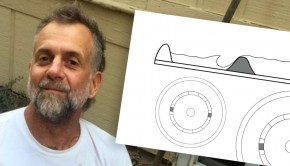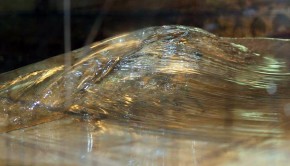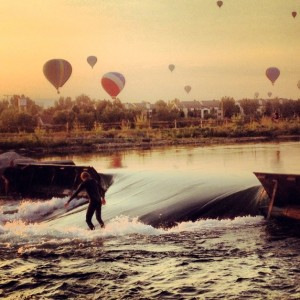The Case for Adjustability in River Wave Design
If you have ever surfed ocean waves, and most of us river surfers have, you know that there are many factors that must align to have epic waves: swell size, period, and direction, wind, tide, sand movement – you get the idea. Well, you can think of river waves in a similar way.
For us flow, hydraulic drop, currents, eddies, obstructions and numerous other factors are the difference between driving through our next carves or not. My passion (and job) is designing waves that not only deal with these dynamic factors but optimises them to create high performance surf waves. How do we do it? One key aspect is adjustability.
Waves Are Extremely Sensitive
A wave is a single point on a spectrum. Above this point is a range of breaking waves and below this is a non-rideable green wave and below that further is a hole (see previous article The Two Types of River Waves on Riverbreak).
For a given set of flow/river conditions there is one specific wave “sweet spot”. This is why some waves only work at very specific flows. You’ve maybe looked at the micro flow effects at your local wave and perhaps noticed the delicate dance the water makes. A small boil or seam from an upstream boulder or a curved current that carries through the wave making it break more or less. Bottom line, waves are extremely sensitive.
Check out how the wave sweet spot is a single point in the video below. This sweet spot is super sensitive.
To further complicate the issue, we want to surf most of the year, at various flows, not just a few weeks a year. And, oh yeah, we surfers are pretty picky about wave shape too. Adjustability allows the wave to change in order to find the sweet spot, stay in it and create the wave shape we need to surf. I’ve designed waves that work with no adjustability but my experience has led me to include adjustability of some kind in all designs.
What Does Wave Adjustability Look Like?
I’ve used several types and have seen countless others. Adjustability typically manipulates one or more of these factors: flow, drop, angle, or bottom contour. Adjustability falls into two categories: real-time and static.
Real-time Adjustibility
Real-time allows adjustment with water flowing whereas static adjustability requires flow to be turned off or diverted around the wave. Examples of real-time systems include The Wave Shaper in Boise, Idaho which adjusts the bottom using pneumatics and hydraulics, or the Alm canal which uses a mechanical screw system to move a plate on the bottom.
In the video below, you see Ryan Richard, the Wave Shaper operator, making the adjustments remotely from the middle of the river on his laptop. Pretty cool right? Even better having Gerry and Tao from Munich in Boise slaying it.
Static Adjustability
Static systems typically attach blocks or other shapes to the river or canal bottom. Although the wave can be adjusted to changing conditions, the flow must first be turned off or diverted around the wave before. Most of the rivers however, are not designed in a way that the flow can be turned off or diverted spontaneously.
The photo below shows Columbus Georgia – this is a “static system” not a “real-time” adjustable feature. We actually never had to do anything to it after it was built worked right away (lucky or good? – who knows a bit of both probably).

Spot: Columbus Wave, Georgia
Pros and Cons
There are pros and cons to each system. Real-time adjustability is typically more expensive to construct initially but reduces costs during tuning and is a good option in rivers or other situations where flow varies (like a river) and flow can’t be turned off. It can also achieve very fine adjustments difficult to do with a static system.
A static system tends to be less expensive up front and is a slightly less complicated design but can require a lot of iterations during tuning to get the wave right. So how do you know which system is best? That’s a tough question. There isn’t a one size fits all system. It needs to be evaluated project by project based on site, budget and performance expectations.
Does Adjustability Guarantee Wave Building Success?
No, but it does improve the chances for success. You can’t compensate for a bad design with adjustability. There have been wave projects built with extensive and costly adjustability that don’t work well. Adjustability will never replace a good, fundamentally sound design that is already near that wave sweet spot.
It is usually cost prohibitive to make waves excessively adjustable or the site doesn’t allow drastic changes to the channel after the wave is constructed, so you have to be close to begin with. Knowing where waves are sensitive and which characteristics are needed is the key to successful adjustability. My approach is to design adjustable features with the precision needed for a non-adjustable wave then build in the adjustability from there at sensitive locations to dial in the wave.
River Waves are a beautiful thing. Let’s keep progressing surf wave design to bring quality river waves to a town near you. Include adjustability in your next wave project, trust me it’s worth it.
To health and high water. See you on the river!
-
Benjamin Smith
-
Ben Nielsen
-
Kate NB
-
Ben Nielsen
-

